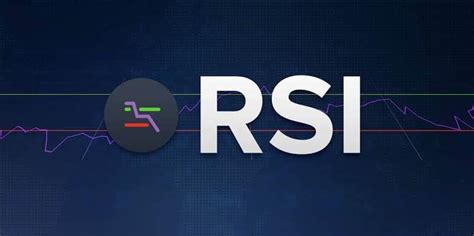Cryptocurrency Trading Secrets Revealed: A Guide to Cryptocurrencies, the Relative Strength Index (RSI), and Trading Indicators
The world of cryptocurrency trading has grown exponentially in recent years, with new investors entering the market every day. However, navigating the complex landscape of digital currencies can be overwhelming for even the most experienced traders. In this article, we will look at three essential tools that will help you unlock the secrets of cryptocurrency trading: cryptocurrency, the Relative Strength Index (RSI), and trading indicators.
What is cryptocurrency?
Cryptocurrency, also known as cryptocurrencies or simply cryptocurrencies, refers to digital or virtual currencies that use cryptography for security purposes and are decentralized, meaning they are not controlled by any government or financial institution. Examples of popular cryptocurrencies include Bitcoin, Ethereum, and Litecoin.
Relative Strength Index (RSI): A Key Trading Indicator
The Relative Strength Index (RSI) is a technical analysis tool used to measure the strength of an asset’s price action. Developed by J. Welles Wilder in the 1970s, RSI is a simple yet powerful way to identify overbought and oversold conditions, which can help traders make informed trading decisions.
Here’s how RSI works:
- RSI is calculated as the ratio of the number of periods to the number of normal periods.
- A reading of 0-30 indicates a strong uptrend or downtrend, while a reading above 70 is considered overbought and is due for a pullback.
- A reading below 30 is considered oversold, indicating a potential buy signal.
Trading Indicators: A Game Changer in Cryptocurrency Trading

Trading indicators are mathematical models used to predict price movements. When it comes to cryptocurrency trading, some popular trading indicators include:
- Bollinger Bands (BB): Developed by John Bollinger in 1990, BB is a technical indicator that plots a moving average with two standard deviations above and below it. When prices move outside of these ranges, it often indicates overbought or oversold conditions.
- Stochastic Oscillator: This indicator, which is based on the CCI (Compound Interest Chart), measures the relationship between price and volatility. It provides buy and sell signals when the oscillator is above 70 and below 30.
- Moving Averages (MA): A simple MA calculates the average of a series of prices over a period of time. This can help traders identify trends, support and resistance levels, and predict future price movements.
LP: The Leverage Play
Leverage trading, or LP, is a risk management strategy that involves using borrowed funds to increase the potential return on an investment. In cryptocurrency trading, LP allows traders to trade with larger amounts of capital while managing their risk more effectively.
Here’s how LP works:
- Leverage: Investors use borrowed money from a broker to increase the size of their position.
- Margin calls: If a position moves against the trader, they may have to pay back the borrowed funds, which can lead to significant losses if not managed properly.
- Risk management: LP allows traders to reduce risk by limiting position size and managing leverage.
Conclusion
In summary, understanding cryptocurrencies, the Relative Strength Index (RSI), and trading indicators is essential to trading cryptocurrencies successfully. By understanding the concepts of these tools, traders can gain valuable insights into market dynamics and make more informed decisions. In addition, using LP leverage provides a controlled risk management strategy that allows traders to maximize potential profits while minimizing losses.
Recommended reading
To learn more about cryptocurrencies, RSI, and trading indicators:
- “Technical Analysis of Financial Markets” by John J.
